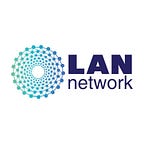The Structure of LAN
LAN is an innovative blockchain-based platform that consists of four main layers:
Layer 0: Hardware
Layer 1: Consensus
Layer 2: Smart Contract
Layer 3: Ui/UX
Let’s have a closer look at layers 1 and 2.
Layer 1: Consensus
Layer 1 — Consensus — is LAN Network. LAN Network aims to utilize the power of blockchain and will serve as an alternative for traditional EVM-based platforms and will carry out transactions on distributed ledger technology, which is a decentralized digital database.
The LAN network will enable WASL Platform users to interact with other EVM-based chains seamlessly. LAN network enriches low-cost transactions to chop down the cost of doing business, and handling data uninterrupted.
Layer 2: Smart Contract
Layer 2 — Smart Contract is represented by a new and unique WASL platform. A WASL Platform enables trusted applications to connect through secured chains like Ethereum, Binance Smart Chain, etc.
WASL Platform acts as the pathway for consumers to experience the entire LAN ecosystem. WASL platform is a level of abstraction that masks the technicalities of channel communication and acts as a network user interface, so that end-users may get the most out of the Layer 1 network experience.
WASL protocols can be segregated into two major sub-layers — application and execution — depending on a given dApp’s use case. APIs, user interfaces (UIs), and scripts are the key components of the application section, which deal with user-facing apps aimed to enable user interactions with multiple blockchains. APIs are used by dApps in this category to interface with the LAN network. The execution layer, on the other hand, is responsible for the rules and smart contracts.
